
A sleeper car is an expert at remaining unnoticed in the world of cars. It’s a car with good performance but no flashy paint job, large aerodynamic parts, or anything else that could draw unwanted attention. These subtle, sporty vehicles have restrained exterior styling and look like everyday vehicles, but they are incredibly powerful inside.
When muscle cars were first popular, the easiest way to create a sleeper was to take a regular car and increase its power to the point where it became dangerous for both the driver and the vehicle. Fortunately, some car manufacturers have made life easy for you all along the way by creating some cars that were designed to be a little more powerful than anyone could have ever imagined.
The classic sleeper will never go out of style; here are some of the greatest ever produced.
Best Sleeper Cars Of All Time
14. 1996 Ford Taurus SHO
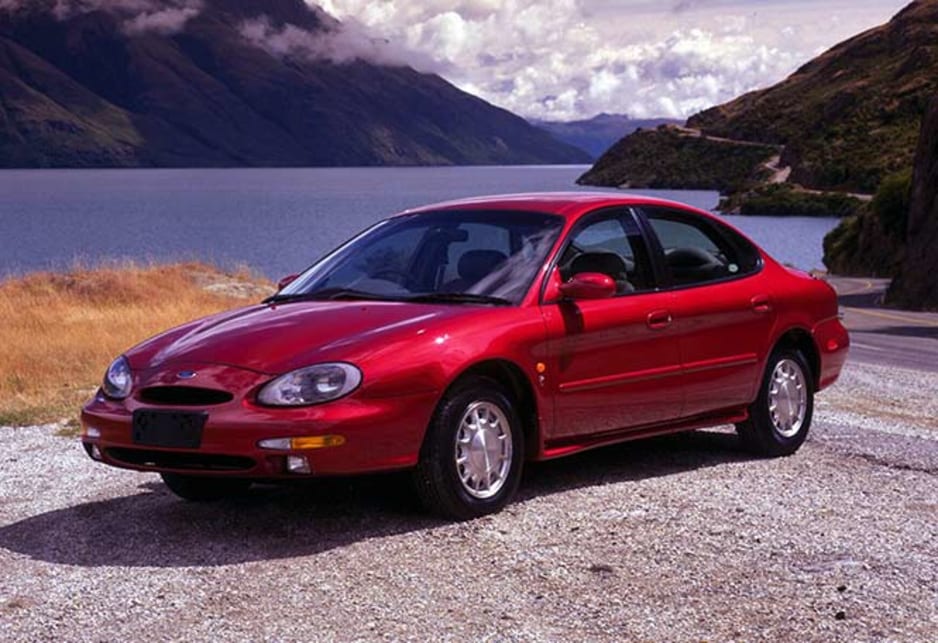
The third-generation Ford Taurus SHO was a bit of a Frankenstein, magnificent and scary all at once. The “bubble Taurus” was the epitome of horrible 90s design due to its organic “bubbly” and oblong form. But looking back, there’s a nostalgia for the car that appears like a breath of fresh air compared to the repetitious, monotonous design culture of today.
Ford made its third Taurus SHO high-performance car look unique under its puffy exterior. This time, the SHO would have a V-8 engine. Not just any V-8, but one with block and heads designed by Yamaha technical experts and another by Cosworth engineers, Ford’s previous partner on other fast vehicles. This long V-8 front-wheel-drive marvel was the epitome of a sleeper.
Specifications
| Engine Size | 3.4-liter V-8 |
| Transmission | 4-speed automatic |
| Power | 235 hp |
| Torque | 230 lb-ft |
| Driveline | Front-engine, FWD |
| 0 to 60 MPH | 7.7 seconds |
| Top Speed | 136 mph (218 kph) |
13. 2012 Buick Regal GS

No one could deny the Regal GS’s stunning good looks. The GS variant gave the car a more opulent appearance than the base model, which was slightly designed. The modest Regal appeared to go up a level with its large wheels, a revised bumper, and body panels. It didn’t look very fast but was more about high-class beauty.
The 2.0-liter turbocharged engine of the Regal GS produced roughly 300 lb-ft of torque and 270 hp. Even though it was a little heavyweight, these were quite respectable numbers for a two-liter engine at the time. The smaller 2.0-liter may surprise you after you give it a spin around the track, but if you wanted a little more power, you could also choose the more potent 3.8-liter V-6 that was available in some of the later model GS.
Specifications
| Engine Size | 2.0-liter turbocharged inline-4 |
| Transmission | 6-speed automatic |
| Power | 259-270 hp |
| Torque | 295 lb-ft |
| Driveline | Front-engine, FWD |
| 0 to 60 MPH | 6.5-.6.2 seconds |
| Top Speed | 142 mph (228 kph) |
12. 2023 Lexus IS500
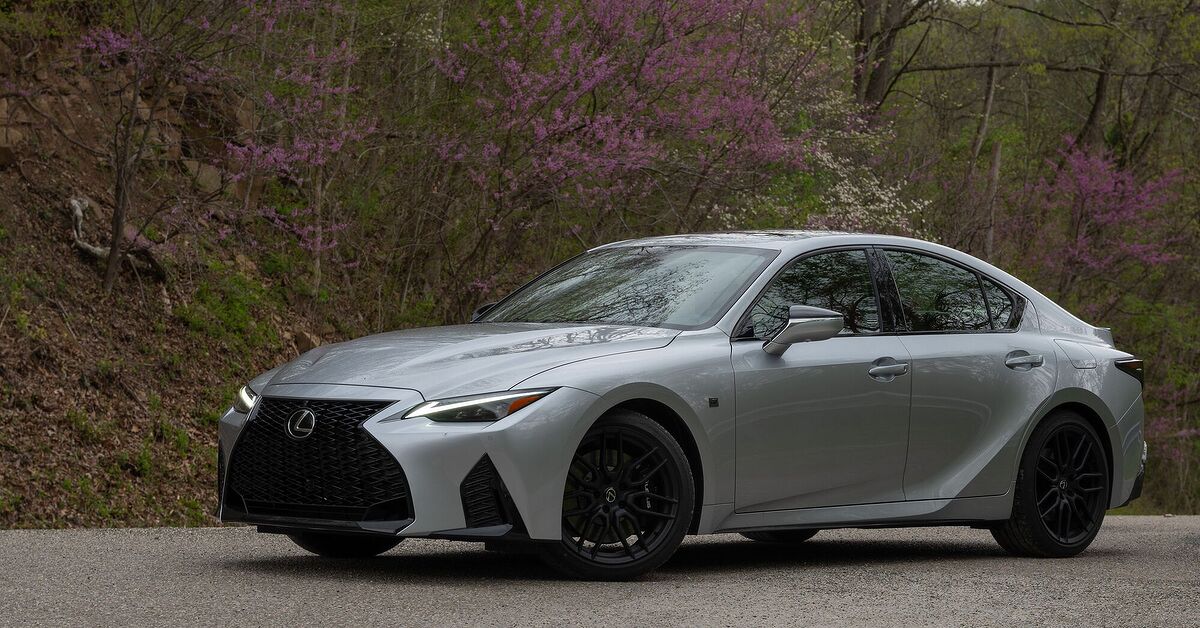
Every time a Lexus IS goes by, it’s very hard to tell if it’s a 350 or 500. The stylistic alterations are so subtle that you’d have to see the quad tailpipes or hear the fantastic 5.0 liter V-8 rumbles to recognize it’s an IS500. This vehicle is a great modern sleeper.
It’s not even that loud when it’s not moving, but when you crack the gas, 470+ hp power can be experienced. It is strongly advised that you familiarize yourself with this vehicle before attempting to race it, as the power and torque will take you by surprise.
Specifications
| Engine Size | 5.0-liter V-8 |
| Transmission | 8-speed shiftable automatic |
| Power | 472 hp |
| Torque | 395 lb-ft |
| Driveline | Front-engine, RWD |
| 0 to 60 MPH | 4.4 seconds |
| Top Speed | 149 mph (239 kph) |
11. 1984 Mercedes-Benz 190E
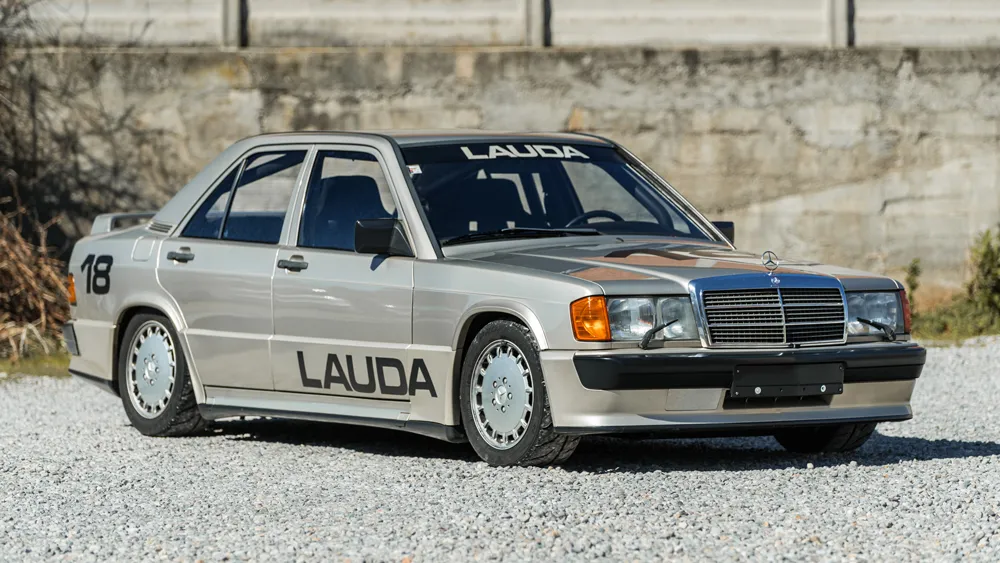
The legendary Mercedes-Benz 190E is one of the most sought-after sleepers ever made. The 2.3-16 version of the 190E was a surprise that no one asked, but Mercedes had to go racing. The result was a homologation road car resembling a performance sedan built from a drowsy race car. The appearance is so subtly different from the average eye that this car represents a time when engine size badging was significant.
At the time, the four-cylinder DTM racing cars were governed by regulations, and the 2.3-liter, 16-valve engine met those requirements. The Mercedes’s slow 0 to 60 mph (96 kph) indicates that it was not designed to compete with straight-line quarter-mile muscle cars, but its well-engineered suspension allows it to hug the road at high speeds.
Specifications
| Engine Size | 2.3-2.5-liter inline-4 |
| Transmission | 5-speed manual |
| Power | 182-232 hp |
| Torque | 173-181 lb-ft |
| Driveline | Front-engine, RWD |
| 0 to 60 MPH | 7.1-6.7 seconds |
| Top Speed | 155 mph (249 kph) |
10. 2008 Audi S6

What about a Lamborghini dressed as an Audi? That is exactly what you will get with a 2008 Audi S6. This modest mid-sized car had a 5.2-liter V-10 from Lamborghini’s (new at the time) Gallardo supercar. With 435 hp, the S6 could reach 60 mph (96 kph) in under five seconds, which was fast for a mid-2000s Audi without an RS badge.
High-cylinder count engines were typical in sporty cars at the period, but this was the S model and styled accordingly. Later, famous tuners opened up the S6’s exhaust system, and videos of Audi cars sounding like Lamborghini were all over the internet as people tried to wake up the ultimate Audi sleeper.
No matter how hard you push the Audi S6, its V-10 engine will astonish everyone—the Chevrolet Camaro waiting at the light, the other drivers in the car, and you yourself—when the launch force puts you back in your seat.
Specifications
| Engine Size | 5.2-liter V-10 |
| Transmission | 6-speed automatic |
| Power | 435 hp |
| Torque | 398 lb-ft |
| Driveline | Front-engine, AWD |
| 0 to 60 MPH | 4.9 seconds |
| Top Speed | 155 mph (249 kph) |
9. 2001 Volkswagen Passat W8
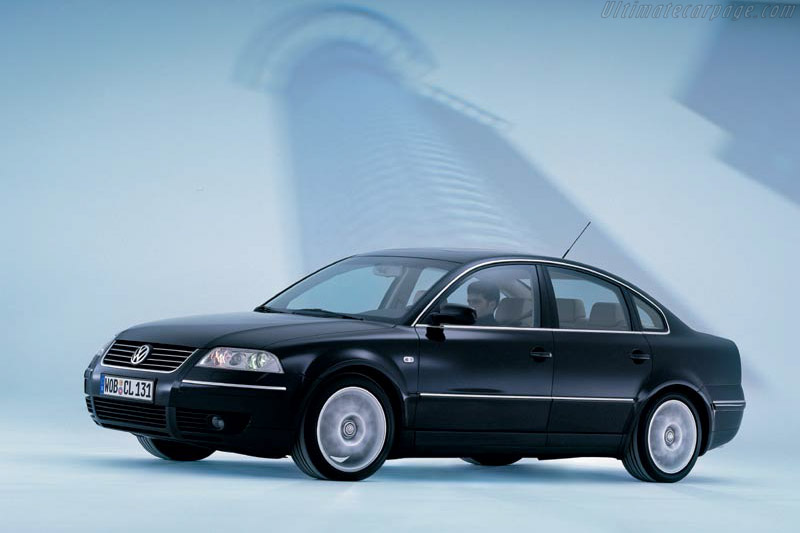
The 2001 Volkswagen Passat is a bit of a freak; it may be among the sleepiest vehicles. Even though Volkswagen isn’t known for its eight-cylinder engines, your early 2000s Passat wagon engine upgrade came with one.
This car included sedan or wagon variants, a manual transmission, a “4-Motion” all-wheel-drive, and the famous W-8 engine, which merged two VR4s at a standard crank. Volkswagen was then able to provide V-8 power in a smaller package. Only this could fit eight-cylinder power into a four-cylinder car with an occasional six-cylinder.
Only the Passat used the 271 hp W-8 engine until Volkswagen dropped it and switched to a V-8 engine due to sales. Although the Volkswagen Passat W-8 is still a solid underdog in the modern market, it falls short of truly dedicated power-hungry car enthusiasts due to its W-8 design’s limitations on power and torque.
Specifications
| Engine Size | 4.0-liter W-8 |
| Transmission | 5-speed automatic / 6-speed manual |
| Power | 275 hp |
| Torque | 273 lb-ft |
| Driveline | Front-engine, AWD |
| 0 to 60 MPH | 7.4-6.2 seconds |
| Top Speed | 155 mph (249 kph) |
8. 2003 Volvo V70 R
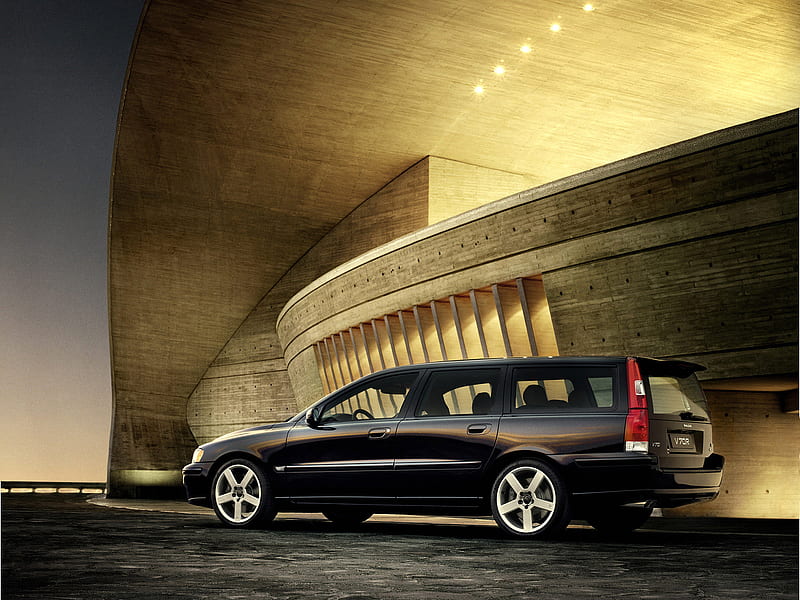
Even though it wasn’t the first fast Volvo wagon, the V70 R was a hidden wonder. Furthermore, it may have brought back the idea that fast Volvos could be taken seriously. Volvo has had beefed-up vehicles in various forms since the V70 R. With the introduction of the R and R-design models, Volvo has regained its sportiness from decades past. After the R’s came the Polestar, which adds a little speed to the equation.
With modest clues at its performance edge, the Volvo V70 R may be one of the most subtle performance offers ever. Its only distinguishing features are simple five-spoke wheels and a bumper redesign. With around 300 hp from its sonorous inline-5 engine, it looks almost as pedestrian as any other wagon on the road, making it an excellent sleeper.
Specifications
| Engine Size | 2.5-liter turbocharged inline-5 |
| Transmission | 5-speed automatic / 5-speed manual |
| Power | 295 hp |
| Torque | 295 lb-ft |
| Driveline | Front-engine, AWD |
| 0 to 60 MPH | 7.3-5.6 seconds |
| Top Speed | 155 mph (249 kph) |
7. 2004 Mercedes-Benz E55 AMG (W211)

Mercedes outperformed itself in the early 2000s, but the W210 E55 AMG was always going to be a difficult act to follow. The W211 E55 AMG was a revelation and is credited with initiating the German horsepower battles that continue to this day. It was a super sedan.
Produced from 2003 to 2006, the W211 E55 had a custom-built 5.5-liter supercharged V-8 engine directly inspired by the SL of the time. While 469 hp may not sound like much today, the 516 lb-ft of torque and soundscape will amaze even the most ardent critic.
All of the power was sent to the back wheels through a five-speed automated transmission. This modest-looking Mercedes can go from 0 to 60 mph (96 kph) in just over four seconds, and its top speed is limited to 155 mph (249 kph). Take the limiter off, and it’s 180 mph (289 kph) or more, the fastest production sedan of its time.
Specifications
| Engine Size | 5.5-liter supercharged V-8 |
| Transmission | 5-speed automatic |
| Power | 469 hp |
| Torque | 516 lb-ft |
| Driveline | Front-engine, RWD |
| 0 to 60 MPH | 4.5 seconds |
| Top Speed | 155 mph (249 kph) |
6. 2014 Volvo V60 Polestar
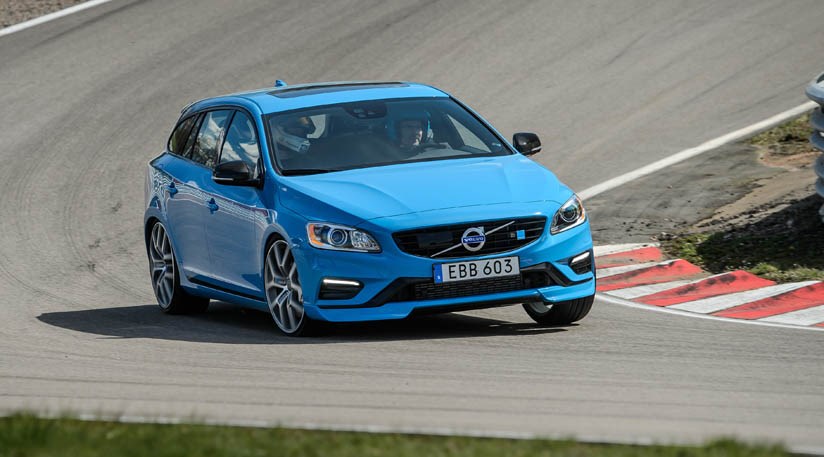
Polestar was to Volvo what AMG is to Mercedes before becoming an EV manufacturer. Polestar continues to work its magic in Volvo cars with internal combustion engines, but more so in the Volvo V60. Apart from Audi, Volvo is another company that makes quick station wagons. The 2014 V60 Polestar is a subdued performance vehicle.
The exterior is really subtle, in typical Swedish style, and it’s hard to tell this from the lower-end V60 vehicles. Depending on the model year, the V60 T6 Polestar is powered by a turbo, inline-six, or turbo-four engine. Both are excellent and somewhat sturdy machines. The larger engine produces more torque but a little less power.
Specifications
| Engine Size | 2.0-liter turbocharged inline-4 / 3.0-liter turbocharged inline-6 |
| Transmission | 6 and 8-speed automatic |
| Power | 350-367 hp |
| Torque | 346-369 lb-ft |
| Driveline | Front-engine, AWD |
| 0 to 60 MPH | 4.8-4.6 seconds |
| Top Speed | 155 mph (249 kph) |
5. 2008 Lexus GS460

When it comes to performance, you might not immediately think of Toyota’s premium division, Lexus. Although the Lexus LF-A is an icon, most other Lexus models feel like they’re striving to keep up with the Germans in driving characteristics. That is not the case with the Lexus GS460, which surpasses the German premium cars with V-8 engines in every way.
The top-of-the-line GS460 is powered by the 1UR-FSE, which is known for reliability. Plus, it holds its own against similarly equipped vehicles from the same era, such as the BMW 550i and Mercedes E500. As this is primarily a Toyota product from the 2000s, it also has a good build quality and high-reliability rating.
Specifications
| Engine Size | 4.6-liter V-8 |
| Transmission | 8-speed automatic |
| Power | 342 hp |
| Torque | 339 lb-ft |
| Driveline | Front-engine, RWD |
| 0 to 60 MPH | 5.4 seconds |
| Top Speed | 155 mph (249 kph) |
4. 2018 Honda Accord Sport

The tenth-generation Honda Accord is a quiet hero with a turbo-four engine similar to the Civic Type-R. The Accord’s K20C engine has a smaller turbocharger for greater response and low-end pull, but you can upgrade to a Civic Type-R’s “snail” if you want. Additionally, it’s the final Accord to be offered with a manual transmission.
All power is directed towards the front axle. The all-wheel drive option was never available for any Honda Accord. Its positive attributes are its large interior and one of Honda’s best engines. Although the governor limited the top speed to 126 mph (202 kph), it could be extended to 160 mph (257 kph) when the limiter was removed.
Specifications
| Engine Size | 2.0-liter turbocharged inline-4 |
| Transmission | 6-speed manual / 10-speed automatic |
| Power | 252 hp |
| Torque | 273 lb-ft |
| Driveline | Front-engine, FWD |
| 0 to 60 MPH | 5.8 seconds |
| Top Speed | 160 mph (257 kph) |
3. 2004 Cadillac CTS V

An unexpected vehicle from a company with uncertain future plans. The original Cadillac CTS V started the V performance division, which may have revitalized the brand, catering to a more “seasoned” age. There have been numerous generations of the CTS V, a smaller ATS, the CT4 and CT5 V, and now Blackwing variants.
Despite the somewhat alphabetical roller coaster ride, the basic idea remains the same: take the best powertrains from GM and improve upon them with good chassis tuning. Not very light but always quick; the cars outhandle the competitors, especially the later V versions.
V automobiles have historically had more restrained styling, starting with the 2004 CTS V. The V’s external differences from the basic CTS are limited to a shining mesh grille, large brakes, and a set of chrome wheels. You would never guess that under there is a 5.7-liter Corvette engine with 400 hp.
Specifications
| Engine Size | 5.7-6.0-liter V-8 |
| Transmission | 6-speed automatic / 6-speed manual |
| Power | 400 hp |
| Torque | 395- lb-ft |
| Driveline | Front-engine, RWD |
| 0 to 60 MPH | 4.6 seconds |
| Top Speed | 165 mph (265 kph) |
2. 2008 Pontiac G8 GT/GXP

Although Pontiac is no longer in production, the G8 was one of their best-selling models. The G8 was impressive, with a sharp exterior and a minimalist interior. The base model was fairly ordinary, with a V-6 powertrain.
With the GT model, the V-6 engine was replaced with a 6.0-liter V-8 engine from the Corvette, which produced 361 hp and 385 lb-ft of torque. Because the styling cues didn’t differ much between models, it was challenging to distinguish a GT model from a base model.
Specifications
| Engine Size | 6.0-6.2-liter V-8 |
| Transmission | 6-speed automatic / 6-speed manual |
| Power | 361-415 hp |
| Torque | 385-400 lb-ft |
| Driveline | Front-engine, RWD |
| 0 to 60 MPH | 5.1-4.7 seconds |
| Top Speed | 175 mph (281 kph) |
1. 2009 Hyundai Genesis

It’s hard to believe that a Korean manufacturer best known for its low-cost, mass-produced cars has released a luxury sedan with a V-8 engine that can compete with German premium models. While Hyundai’s reputation for producing low-quality, mass-produced goods remains, the Genesis brand gave the company a foothold in the premium market that no other model could match.
The BH-series Genesis sedan was the first vehicle to do this; it was one of the dependable V-6 models that offered the Tau V-8 engine as an option. Hyundai effectively created an automobile that was a smaller, more powerful version of Ford’s Modular V-8. The Hyundai Genesis Coupe is one of the most reliable sports cars you can get for a low price. The Genesis sedan is even more reliable because it isn’t abused much.
Specifications
| Engine Size | 4.6-5.0-liter V-8 |
| Transmission | 6 or 8-speed automatic |
| Power | 375-429 hp |
| Torque | 333-376 lb-ft |
| Driveline | Front-engine, RWD |
| 0 to 60 MPH | 5.7-4.6 seconds |
| Top Speed | 185 mph (297 kph) |
Conclusion
The best sleeper cars have consistently combined unassuming exteriors with impressive performance, creating a unique and thrilling driving experience for enthusiasts. In this article, we have described the specifications of some of the best sleeper cars of all time. These stealthy cars have left an indelible mark on automotive history and continue to awe car lovers.
No comments:
Post a Comment